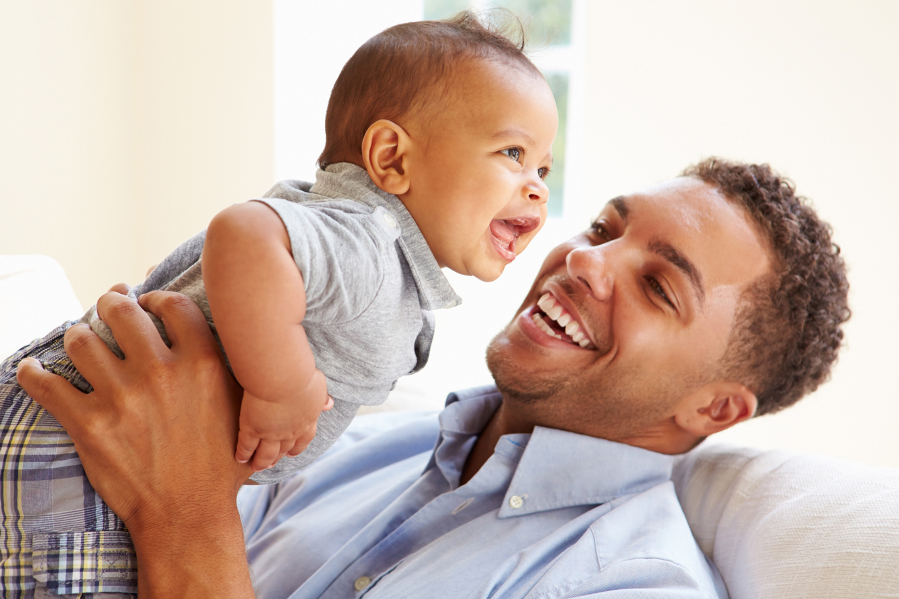ELK GROVE VILLAGE, Ill. — Seven years ago, when he was a new stay-at-home dad, Lance Somerfeld looked for a New York dads group that was holding meetups at playgrounds and kiddie classes.
“It didn’t exist,” he said.
Today, the City Dads Group (www.citydadsgroup.com) meetup Somerfeld started with a friend has expanded into a network of 6,000 dads in 22 cities, with offerings ranging from Dads’ Nights Out to workshops on the nuts and bolts of parenting.
“Dads are just as interested in potty training, introducing solids, how to install car seats as moms,” Somerfeld said.
Fathers are more involved in their children’s lives today than they were even 10 years ago, according to a new report from the American Academy of Pediatrics that draws on census data, surveys and new academic research. Among the findings:
• The number of stay-at-home dads increased by more than 62 percent from 98,000 in 2003 to 159,000 in 2012, according to the U.S. Census.
• Fathers spent 17 hours a week on child care and housework in 2011, up from 6.5 hours in 1965.
• Paid family-leave laws that support father-infant bonding have made headway in the past decade.
“There is a shift,” said Dr. Craig Garfield, a co-author of the report. “There’s a palpable shift in what men’s expectations are as they start to build families and how that balances with work.”
Garfield, an associate professor of pediatrics at the Northwestern University Feinberg School of Medicine, said research on fatherhood is a fairly recent phenomenon, so it’s difficult to compare dads of today with fathers in the ’60s. But he said change is in the air, as evidenced not only by formal studies but by cultural phenomena such as the rise of “dad-vertising,” in which fathers are portrayed as capable, hands-on parents rather than workaholics or bumbling oafs.
Moms still do more child care than dads, but the gap is narrowing.
“Women are getting more advanced degrees and more women are entering the workforce, and dads are being asked to take more of a role in child care,” Garfield said.
The report, published online June 13 and slated for publication in the July edition of the journal Pediatrics, also explores a wave of recent research focusing on the father’s role in child development. A 2006 study found that, at 3 years of age, father-child communication was a significant predictor of advanced language development, while mother-child communication was not. (Fathers are more likely than mothers to introduce new words when talking to young kids.) Another study indicated that when fathers were more engaged in infant care and play, children had better mental health at age 9. And several recent studies have found that adolescents with more involved fathers took part in fewer risky behaviors and experienced less depression.
Garfield’s interest in the role of fathers began in 2000, when he took a year off work as a pediatrician to be a stay-at-home dad to his then-18-month-old son. Garfield noticed that his son’s pediatrician didn’t pay much attention to him, the dad, focusing instead on his wife. Later, when Garfield was back at work and doing research, he started looking at the role of the father.
The report recommends that pediatricians make fathers feel welcome and encourage involvement in their children’s care. Other suggestions: Communicate with fathers and stress the role dads can have in a child’s development, especially when it comes to play. (Dads’ rough-and-tumble interactions may lead to better behavior and social skills.) Doctors should also consider screening fathers for postpartum depression, which has been found in 2 to 25 percent of new dads.
Involved dads still face some barriers — try to find a diaper-changing station in the men’s restroom — but Somerfeld said he sees signs of progress. When he told the principal at the school where he used to teach that he was taking a leave of absence to take care of his first child, the principal got on the speaker system and made an announcement to all 2,000 students and staff members:
“I’ve got Mr. Somerfeld in my office here,” the principal said, “and he’s leaving us next year to become a modern man.”



